Your Birdhouse Is Empty, Isn’t It? Here’s How to Actually Get Birds to Move In
I remember my first birdhouse like it was yesterday. I cobbled it together from some scrap pine, mounted it on a big tree in the yard, and waited for the birds to flock to my masterpiece. And I waited. And waited. An entire season went by, and that box stayed stubbornly empty. It was a cute lawn ornament, but it definitely wasn’t a home.
In this article
That first failure taught me the most important lesson in this whole game: a birdhouse isn’t for you. It’s for the birds. We’re not just hanging a decorative box; we’re offering real estate to some very picky tenants. And honestly, their needs have been shaped by millions of years of survival, not our human idea of what looks nice on a tree.
Over the years, I’ve put up dozens of nest boxes, helped conservation groups, and given advice to countless frustrated homeowners with the same problem I had. The difference between an empty birdhouse and one bustling with chirping chicks almost always comes down to a few key details. Let’s walk through them, from a bird’s point of view.
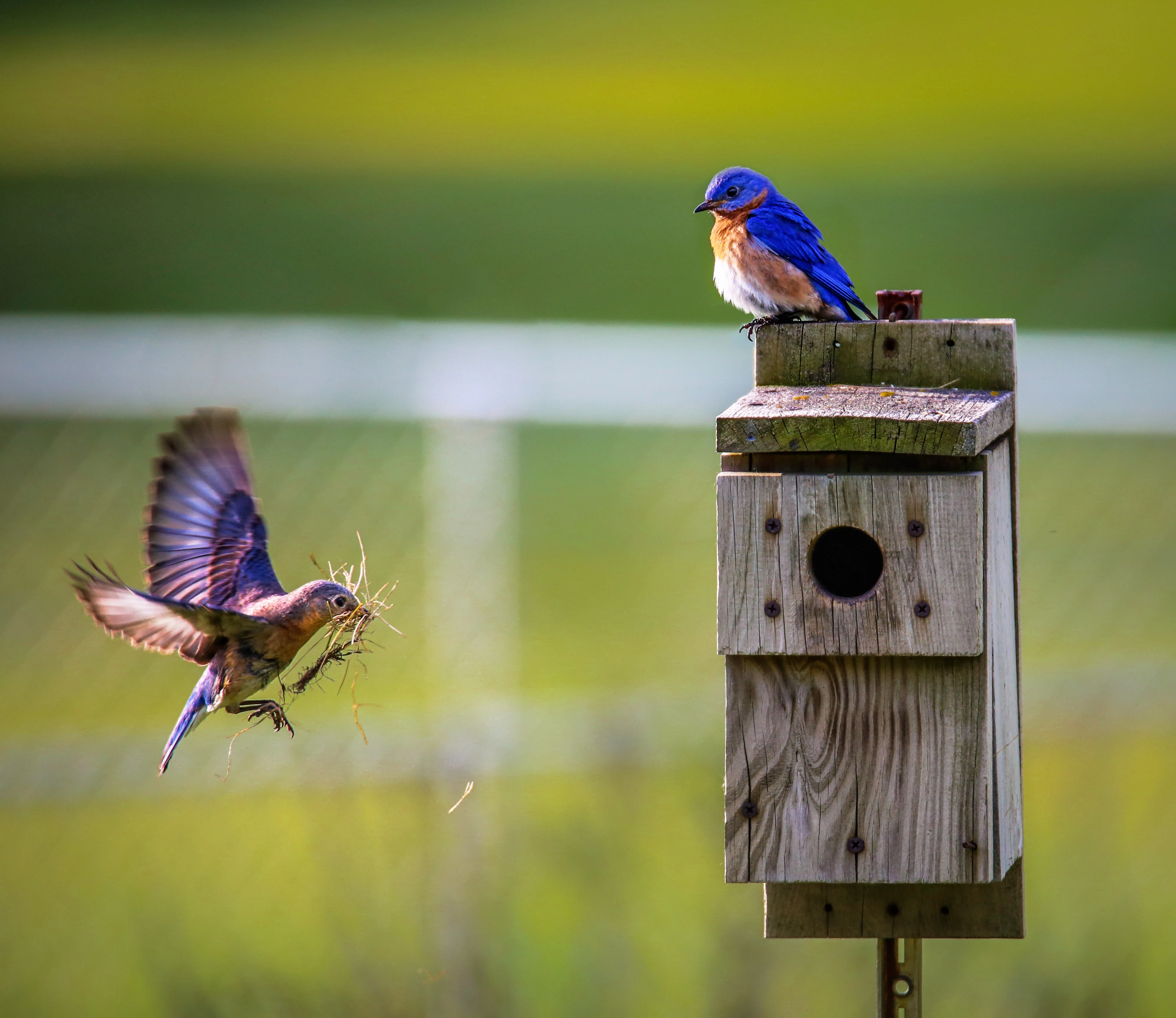
First, Think Like a Bird: It’s a Cavity, Not a House
Before you even think about hanging a box, you have to understand what you’re trying to replicate. The birds we want to attract—bluebirds, chickadees, wrens—are called “secondary cavity nesters.” This just means they look for existing holes, usually ones carved out by woodpeckers in old trees. Your birdhouse is basically a stand-in for a natural tree hollow. If it doesn’t feel right, they’ll just fly on by.
Good Materials are Non-Negotiable
The absolute best material for a birdhouse is plain, untreated wood. That’s it. Cedar, cypress, and pine are fantastic choices. Why? A couple of life-or-death reasons, actually.
- It Breathes and Insulates. Wood is a natural insulator, keeping the nest from becoming a deadly oven in the summer sun or an icebox in a cold snap. A metal or plastic house, on the other hand, can cook eggs and nestlings on a hot day.
- It Provides Grip. The inside of a wooden box is naturally a bit rough. This is critical for baby birds (fledglings) who need to climb up and out of the entrance hole when it’s time to leave. The slick walls of a plastic box can trap them inside.
A good, solid wood birdhouse isn’t a huge investment. You can find excellent ones at specialty birding stores or online for between $25 and $50. Just make sure it’s made from natural wood.
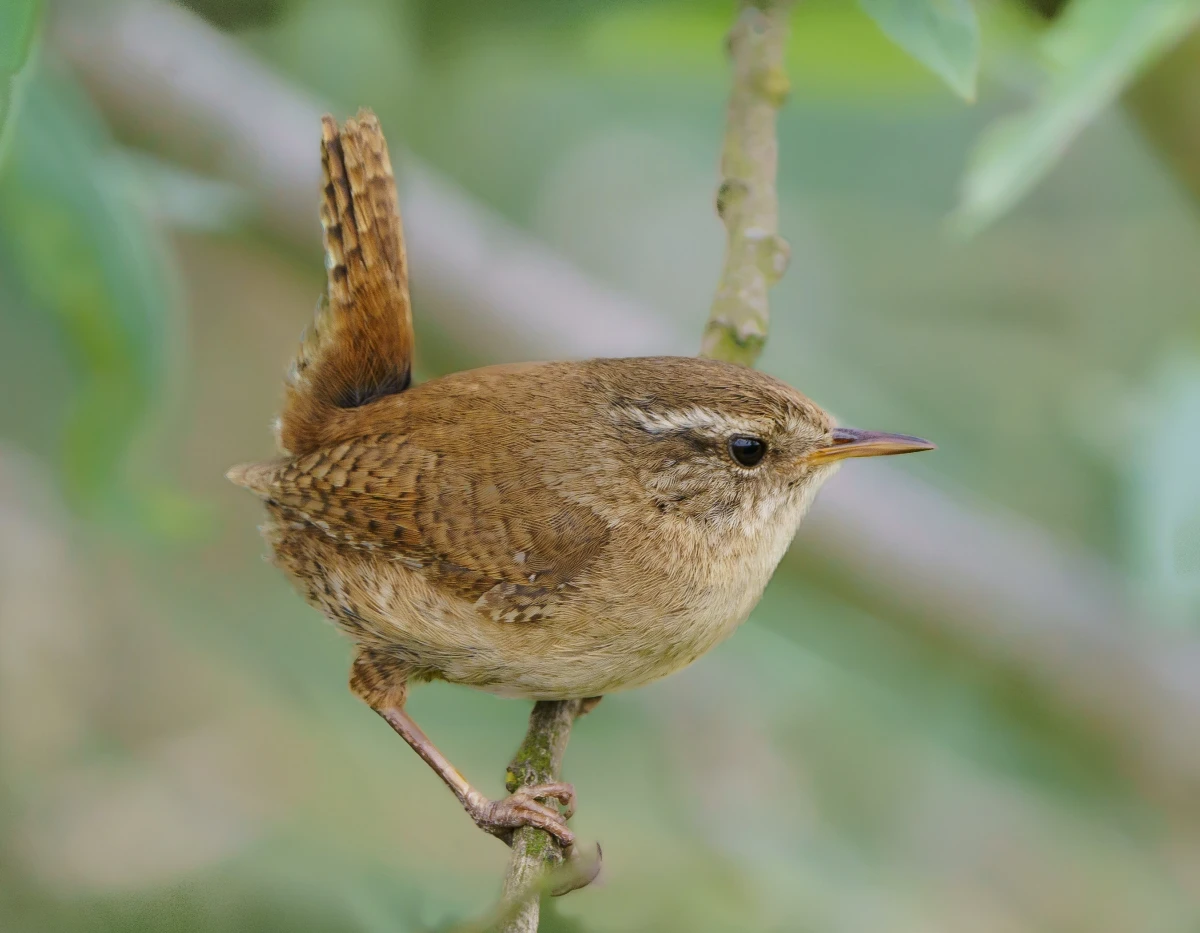
Heads up! Never, ever use pressure-treated wood. The chemicals are toxic to birds. If you want to paint the house to make it last longer, only paint the exterior with a light-colored, non-toxic latex paint. Leave the inside completely raw and natural.
The Entrance Hole: Your Gatekeeper
If you only get one thing right, make it this: the size of the entrance hole determines who can move in. It’s your single best tool for attracting the birds you want and, just as importantly, blocking the ones you don’t.
This is easily the most common mistake people make. A hole that’s too big is an open invitation for aggressive birds like House Sparrows and European Starlings, who will kill native birds and take over the nest. Here are the measurements the pros use:
- 1 1/8 inches: This is the magic number for smaller birds like House Wrens, Chickadees, and Tufted Titmice. The best part? It’s too small for House Sparrows to squeeze through.
- 1 1/2 inches: This is the standard for Eastern, Western, and Mountain Bluebirds. It’s also great for Tree Swallows. The downside is that House Sparrows can fit, which means you’ll have to be on guard (more on that later).
- 1 9/16 inches: This slightly larger size is specifically for Mountain Bluebirds and can help keep starlings out, though it’s a tight squeeze.
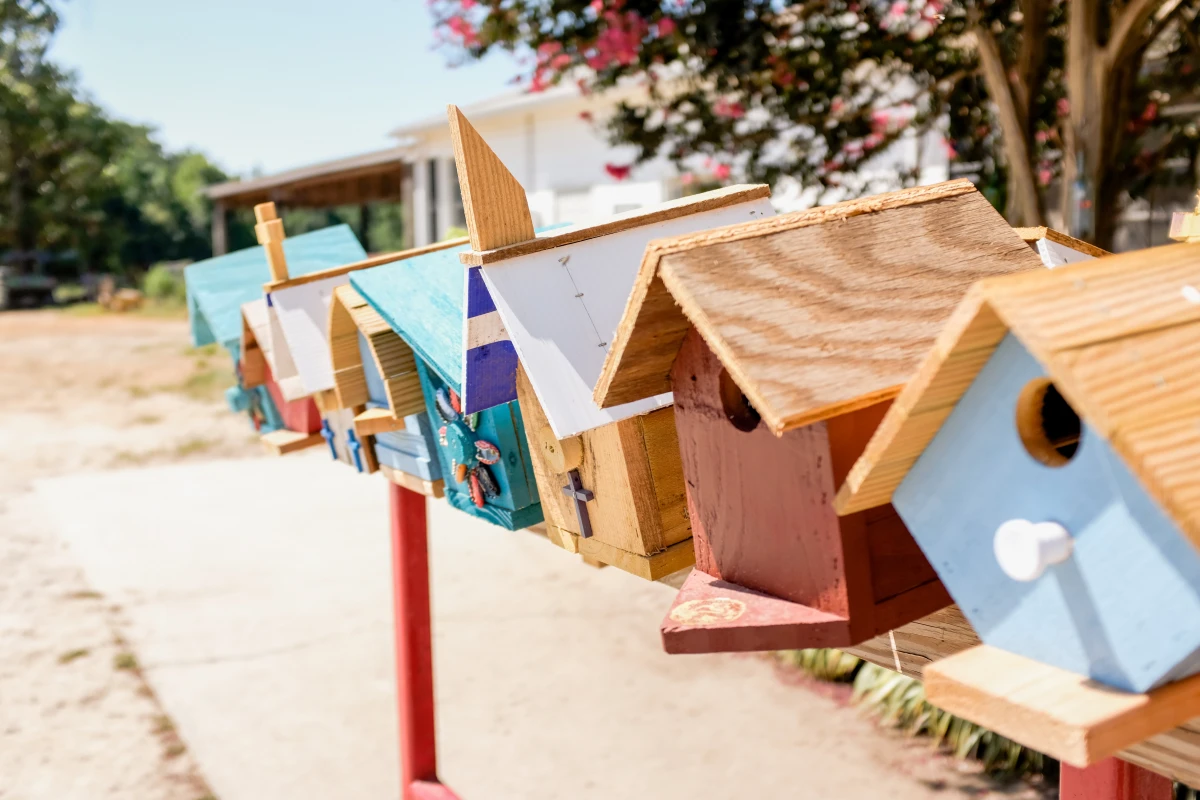
That Perch? It’s a Predator Handle. Get Rid of It.
You’ve seen them everywhere—cute little birdhouses with a dowel rod perch just under the hole. It looks charming, but it’s a deadly design flaw. Our native birds don’t need a perch; they can cling to the side of the box just fine. But you know who loves a perch? Raccoons, cats, and squirrels. It gives them a perfect handhold while they reach in to grab eggs and nestlings.
A quick tip: If you bought a box with a perch, don’t sweat it. Just take a small handsaw and zip it right off, flush with the box. A quick sanding to smooth it out, and you’re done. That five-minute fix can literally save a family of birds.
The Interior: Designed for Survival
What’s inside matters just as much as what’s outside.
- Drainage and Ventilation: A good box should have a few small holes drilled in the floor for drainage and small gaps at the top of the walls for air to circulate. This prevents the nest from getting waterlogged or overheating.
- A Fledgling Ladder: The inside wall below the entrance hole needs to be rough. If the wood is too smooth, the babies can’t climb out. A well-designed box will have shallow horizontal grooves cut into the wood. If yours doesn’t, you can staple a small piece of hardware cloth (metal mesh) to the inside.
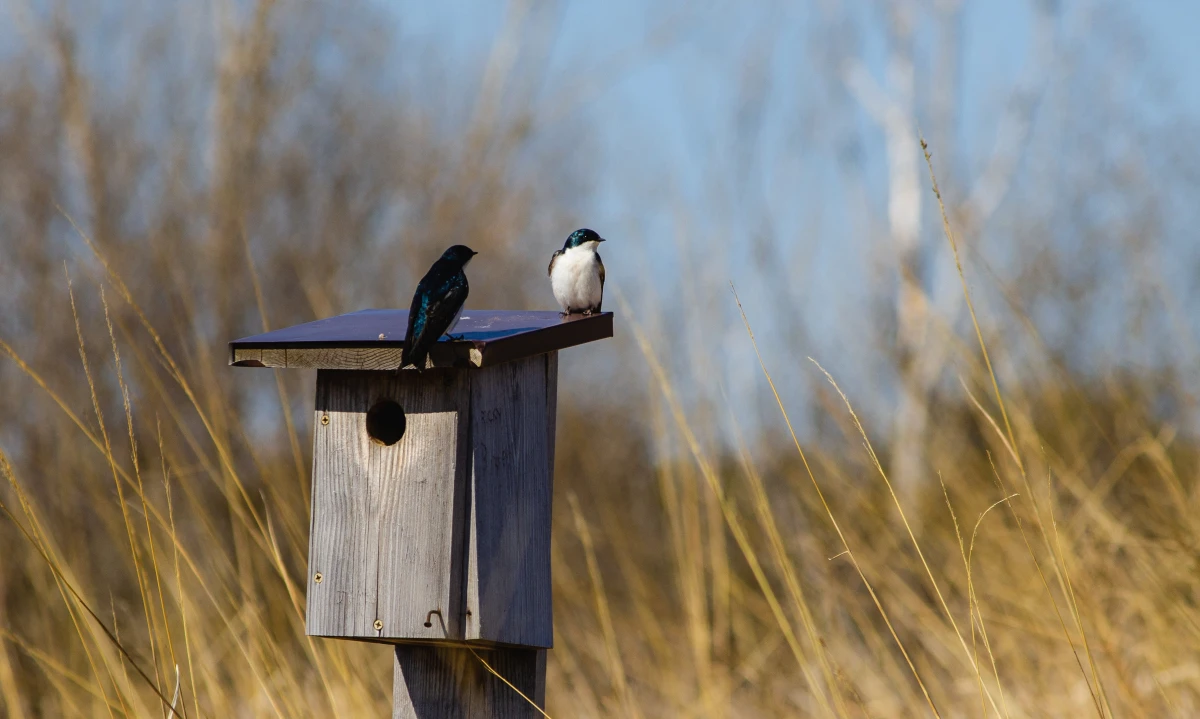
Location, Location, Location (and Timing!)
You could have the world’s best birdhouse, but if you put it in the wrong spot, it will stay vacant. You have to think about habitat, height, and even which way it’s facing.
When Should You Put Up a Birdhouse?
This is a big one. For the best chance of success, you should have your birdhouse mounted by late winter or very early spring. Birds start scouting for nesting sites long before they actually begin building. Getting it up early gives them time to discover it and claim it as their territory. If it’s already May, go ahead and put it up—you might get a late-nesting pair—but your odds are much better if the “For Rent” sign is up before the season truly kicks off.
Match the House to the Habitat
You can’t attract a bird that doesn’t like your yard’s style. Take a look around:
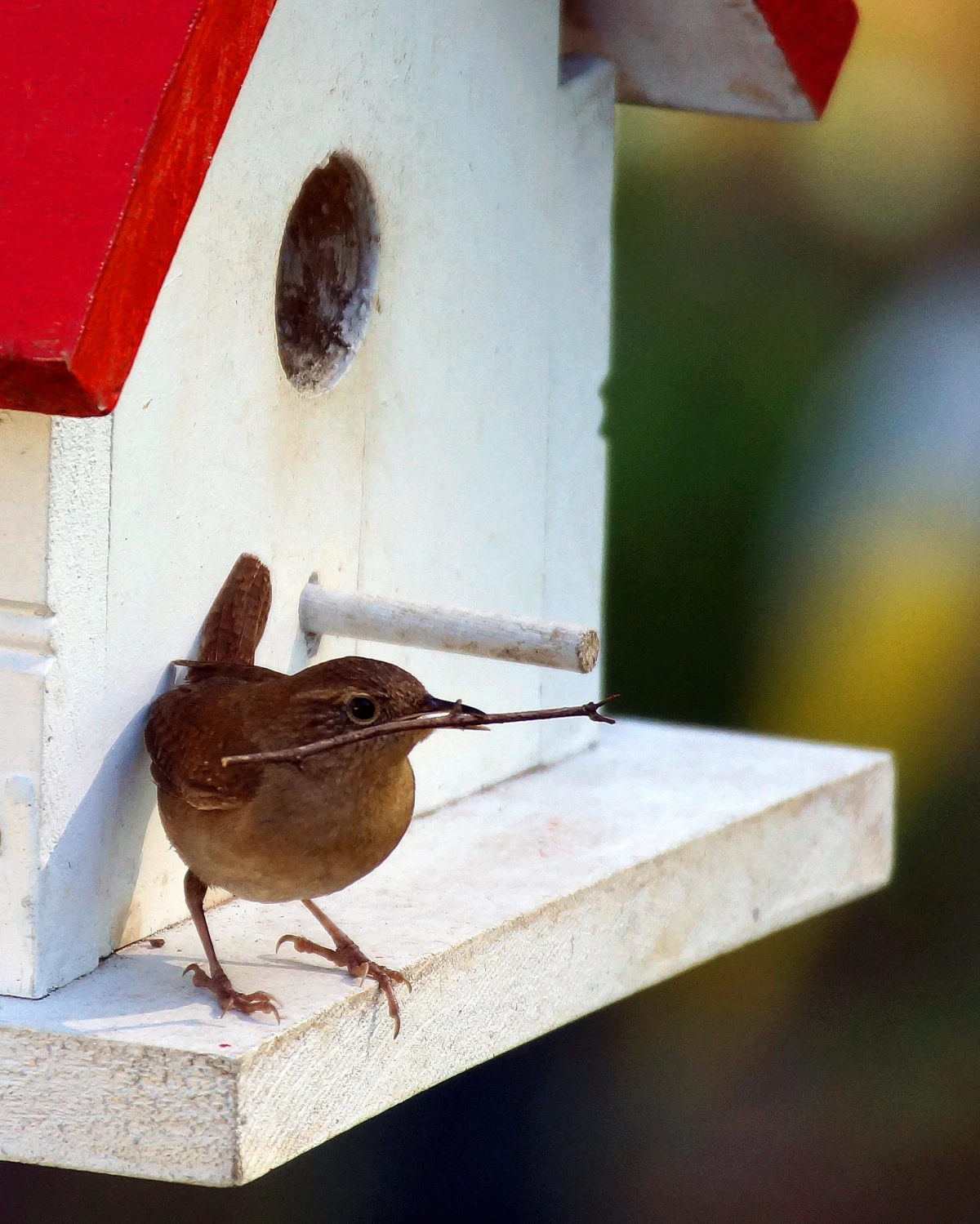
- Open Lawns & Fields: This is prime real estate for Bluebirds and Tree Swallows. They hunt for insects in open air and need a clear flight path. A bluebird box in the middle of a dense forest is a guaranteed failure.
- Wooded Areas & Mature Trees:Chickadees, Titmice, and Nuthatches love this setup. They feel safer with tree cover nearby. Place their boxes near the edge of the woods, facing an open space.
- Shrubs & Thickets: This is where House Wrens thrive. They love nesting near dense, brushy cover. A box on a post right next to a big shrub is perfect for them.
Mounting for Maximum Safety
The best way to mount a birdhouse, especially for bluebirds, is on a smooth metal pole in an open area, about 5 to 7 feet high. Why a pole? It’s much harder for predators like raccoons and cats to climb than a tree trunk or a wooden fence post.
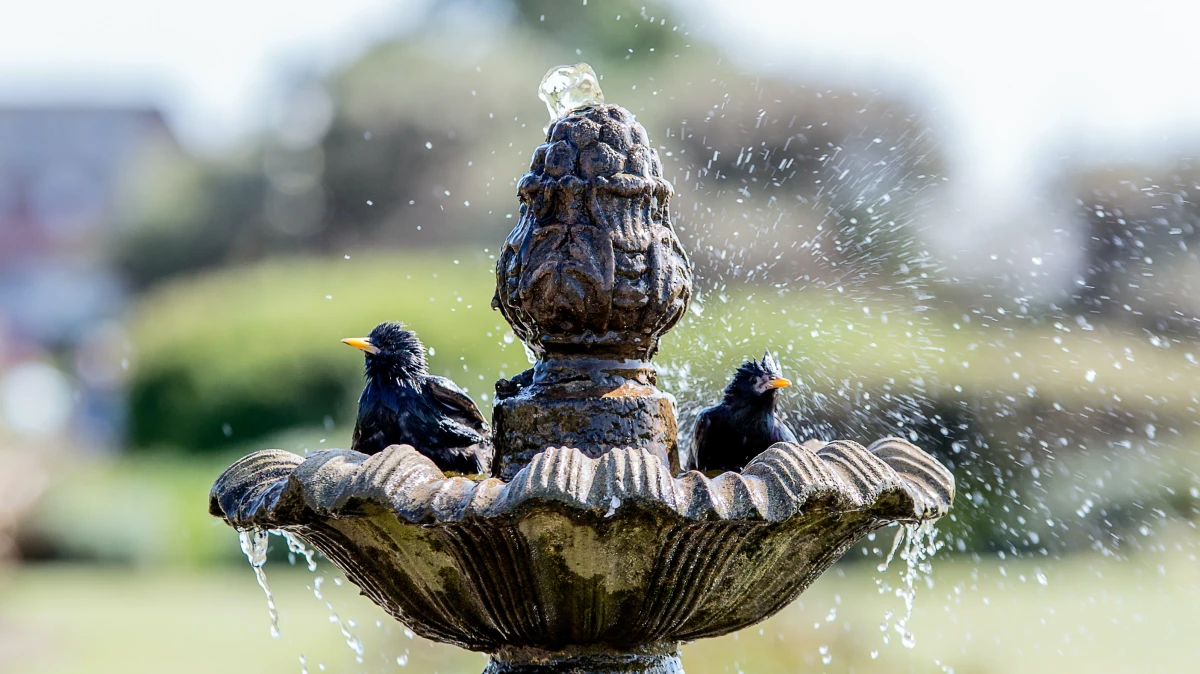
And please, invest in a predator baffle. This is a cone or stovepipe-shaped guard that goes on the pole under the box. I’ve seen them save countless nests. A good pole might cost you $30-$60, and a baffle another $20-$40 from a birding store or online. It’s the single best investment you can make to protect your tenants.
What if you absolutely can’t use a pole? If you have to use a tree, choose a spot on the main trunk that is clear of any branches that a predator could use to hop over to the box.
Give Them Some Space
Most birds are incredibly territorial. Putting two bluebird boxes 30 feet apart is asking for trouble. They’ll waste all their energy fighting each other instead of raising a family. Bluebird boxes need to be at least 300 feet apart. Wrens are also fiercely territorial; one pair might claim your entire yard, so even if you put up multiple wren houses, only one will likely get used.

Dealing with Unwanted Guests
Okay, let’s talk about the hard part. Two non-native, invasive birds—the House Sparrow and the European Starling—are a serious threat to native birds. They will take over boxes, destroy eggs, and kill both adult and baby birds. Allowing them to nest in your boxes actively harms the local ecosystem.
Learn to identify them. The male House Sparrow has a gray cap and a black bib. The female is a more plain, dusty brown but is just as aggressive. If you see a pair stuffing a box full of messy grass and trash, it’s time to act.
Because they are invasive, they are not protected by federal law. It is legal and, from a conservation standpoint, necessary to remove their nests and eggs. You have to be persistent. They will rebuild, sometimes within hours. Keep clearing out the nest material until they give up and move on. It feels tough, but it keeps the box available for the native birds that desperately need it.
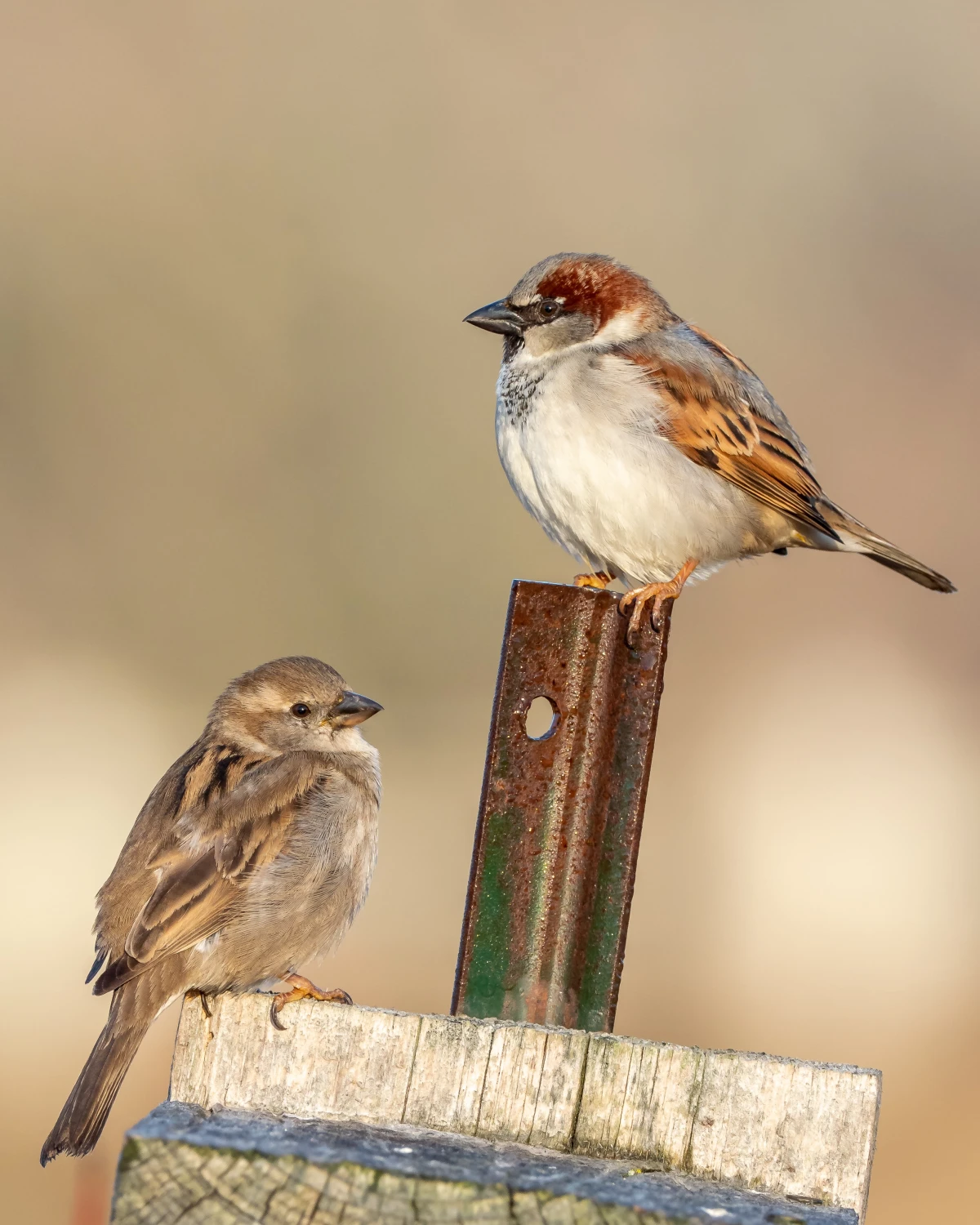
Common Problems & Quick Fixes
Even with the perfect setup, you might run into a few snags. Here are a couple of common ones I get asked about all the time.
- “Help! Wasps built a nest inside before the birds did!” This happens. Once the wasps are gone (be careful!), take a simple bar of soap (like Ivory) and rub a thick layer all over the inside ceiling of the box. For some reason, wasps hate this and won’t build on a soapy surface. Birds don’t mind it at all.
- “There are ants crawling all over my birdhouse pole!” Ants can be a real nuisance. An easy, non-toxic fix is to put a thick ring of petroleum jelly around the pole, about halfway up. The ants can’t cross it. You may need to reapply it after heavy rain.
Your 5-Minute Birdhouse Fix
Want a quick win? Go check your birdhouse right now. Does it have a perch? Saw it off. Are the drainage holes clogged with old debris? Poke them clear with a stick or a screwdriver. Is it hanging in a dark, overgrown spot? Move it to a better location for next season. Simple fixes make a world of difference.
Patience Is Everything
Sometimes, you can do everything perfectly, and a birdhouse still sits empty for a year. Or even two. Don’t get discouraged! It can take time for birds to find a new spot. I once had a beautiful bluebird box that was ignored for two full seasons. Then, one spring morning, a male landed on it, peeked inside, and started singing his heart out. That box has been home to a bluebird family every single year since.
Being a good bird landlord is a long game. But when you finally see a new generation of birds take flight from the safe home you provided, well, there’s nothing quite like it.
Inspirational Gallery
The size of the entrance hole is the single most important factor in determining which birds will move in. A 1 1/8-inch hole is perfect for House Wrens and Black-capped Chickadees, while being too small for invasive House Sparrows. Eastern Bluebirds need a slightly larger 1 1/2-inch opening. A box with the wrong-sized hole won’t just sit empty; it could invite the wrong kind of tenant.
That cute little perch? Get rid of it. Seriously. The birds you want to attract, like wrens and finches, don’t need a perch to enter the hole—they just cling to the front and pop in. A perch only serves as a convenient handle for predators like jays or starlings to harass the nest or pull out the chicks. Many high-quality houses from brands like Coveside or Audubon-certified models are correctly made without one.
Can I paint my birdhouse to match my garden decor?
While your artistic side might be tempted, birds prefer camouflage. Bright, flashy colors can attract predators and may contain toxic chemicals. If you must paint for preservation, use a non-toxic, water-based latex paint in a dull, natural, earthy tone like gray, tan, or dull green. Never, ever paint the inside of the box or the area around the entrance hole.
- It welcomes a new family of insect-controllers to your garden.
- It provides hours of fascinating bird-watching from your window.
- It directly helps support local bird populations.
The secret to all this? A simple annual clean-out. After the last brood has fledged in late summer or fall, remove the old nest material. This gets rid of parasites and makes the box fresh and inviting for the next season’s tenants.
Pole-Mounting: Placing your birdhouse on a smooth metal pole, at least 6-8 feet high and fitted with a predator baffle, is the gold standard for safety.
Tree-Mounting: While it seems natural, mounting on a tree trunk provides an easy access route for predators like raccoons, squirrels, and snakes.
For maximum safety for the eggs and nestlings, a baffled pole is always the superior choice.
Don’t overcrowd the market. While it’s tempting to put up several boxes, many bird species are fiercely territorial. A single bluebird family, for example, may defend a territory of several acres. Placing two bluebird boxes 20 feet apart will likely result in one staying empty due to disputes. If you want to attract different species, use boxes with different hole sizes and place them at least 25-30 feet apart in varied habitats.
Even the best birdhouse can become a death trap if it gets waterlogged.
Before you hang your house, check for drainage. A good design will have at least four 1/4-inch or 1/2-inch holes in the floor to let any rain that blows in drain out, keeping the nest and the chicks dry. If your box doesn’t have them, it’s a simple 2-minute fix with a drill.
Think of your birdhouse location as a quiet, safe neighborhood. Birds want a clear flight path to the entrance, but also some nearby cover—like a shrub or small tree about 10-15 feet away—to use as a staging spot and escape route from hawks. Avoid placing it in the deep, dark woods or in the middle of a wide-open lawn with no cover at all. It’s all about that perfect balance of safety and convenience.
- Face the entrance hole away from prevailing winds (often north or east).
- Ensure the interior wall below the hole is rough or has grooves for fledglings to climb.
- Angle the box slightly forward to help rain run off the roof and away from the entrance.
These are the tiny details that signal ‘prime real estate’ to a prospecting bird.










